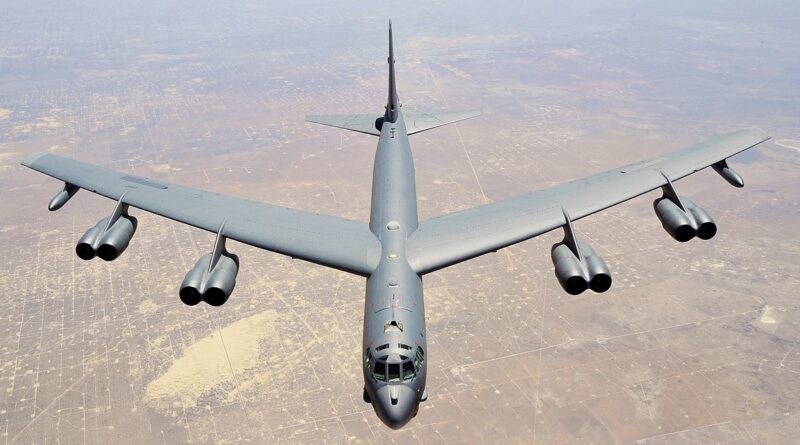US Air Force Confirms Deploying B-1 Bombers To Guam While China Struggles With Skilled Fighter Pilots
Flight shamusdata shows that four B- 1 bombers lately stationed to Andersen Air Force Base in Guam following a series of ballistic bullet launches by North Korea, including one that flew over Japan before this month.n response to your inquiry concerning the B- 1B Lancers in Guam, Bomber Task Force conditioning are routine and aren’t tied to any one country or trouble, ” a US Air Force prophet said.
The acceleration of strategic competition has bolstered the need to strengthen alliances and retain new mates, increase lethality and interoperability, and discourage, deny, and dominate aggression, to promote the collaborative thing of a free and open Indo- Pacific. ”The prophet added that Bomber Task Force operations support the larger US strategy to uphold a free and open Indo- Pacific and aren’t in direct response to another country’s conduct.
North Korea has carried out eight bullet test launches since September 25 and further than 25 since the morning of 2022. Pyongyang has emphasized that its test launches are carried out in response to the turndown by the United States and South Korea to stop common military exercises that Pyongyang says hang indigenous stability.US Deputy Secretary of State Wendy Sherman will meet with Japanese and South Korean counterparts in Tokyo on October 24- 26 to bandy the rearmost North Korean bullet test launches, according to a elderly US administration functionary.
China Struggling?
China’s three aircraft carriers, two of which have been commissioned and one launched in June, represent China’s expanding nonmilitary muscle. still, it appears that the country will have difficulty making full use of these carriers as it struggles to keep up with the rising need for professed boat- grounded fighter spurt aviators, SCMP reported.The report, citing an composition published in Ordnance Industry Science Technology, a Chinese military magazine, stressed how the Chinese Navy still does n’t have a fighter coach designed for carrier- grounded operations despite planting its first aircraft carrier a decade agone
.
The report quoted Beijing- grounded nonmilitary expert Li Jie saying that the PLA needed at least 200 good carrier- grounded fighter spurt aviators to fly 130 boat- borne aircraft after Fujian began ocean trials last week. Fujian is China’s third and most advanced aircraft carrier.
While China’s first two carriers had ski- jump designs, the Fujian has advanced electromagnetic catapults. therefore, the Navy must learn a new aircraft launch and recovery system.It’s full of challenges, ” Jie remarked, “ as aircraft design and airman training are among the world’s most delicate and complicated core technologies – which no bonewill partake with you. Dai Mingmeng, one of the first five Chinese aviators to admit boat- borne instrument, piloted a J- 15 prototype on its debut flight from the sundeck of the Liaoning on November 3, 2012. At the time, he was 41 times old.
The report said he’s now training the new generation and other elderly carrier-able aviators. Since 2020, the Navy has directly enlisted pimps from high academy graduates progressed 16 to 19.The current group of new nonmilitary aeronautics airman pimps had an average age of 20, making them at least ten times youngish than their forerunners. Following the creation of the Naval Aeronautical University in Yantai, Shandong fiefdom, in 2017, the PLA Navy began training its aviators rather than opting competent aspirants from the Air Force.
The US Navy also employs a analogous strategy to retain its fighter aviators. nevertheless, the report describes the difficulties Chinese Navy fighter aviators encounter during their training.PLAN aviators employ a single- machine, binary- seat interpretation of the Chinese- erected JL- 9G as a carrier coach. This aircraft was originally unveiled in 2011.
still, it can not be used to pretend exigency levees on a flight sundeck due to limitations similar as being too light and slow. As a result of these downsides, it has been confined to land- grounded simulated carrier training.The report also stated that the United States service had used the T- 45 Goshawk carrier- good coach to instruct its airman pimps for several decades.The Americans have since erected a more sophisticated outgrowth, the T- 7A Red Hawk, allowing for more effective boat- borne fighter airman training. The T- 7A Red Hawk is accoutredwith a more important General Electric F404 after- burning turbofan machine.
What Do Judges suppose About The Situation?He further explained that “ with a 50 flop rate( presumably closer to 45) and a five- time training period( near to 6 w/ transition), that means the PLAN brought in an redundant 35 aviators starting this time and will continue to do so through 2027. This number is likely allocated to the carrier force. ”He also refutes the point that the PLAN trained “ its aviators – rather than picking good campaigners from the air force, ” stating that “ the PLAN laboriously coddledPLAAF aviators. Luo Shengke was preliminarily a PLAAF Flanker airman until,8, when he transferred to the PLAN. ”He concluded that “ utmost of the composition talks about the specialized limitations of the PLAN’s lack of a carrier coach aircraft, but that has nothing to do with floundering to find enough aviators. ”
In a analogous line, Brian Hart, a fellow with the China Power Project at the Center for Strategic and International Studies( CSIS), said, “ Training and retaining talented aviators is a challenge for any service. The PLA has challenges, especially given the demands of expanding nonmilitary aeronautics. But let’s not overhype their challenges sins. ”China’s Naval J- 15 Fighter Jethe Shenyang J- 15, popular as the “ Flying Shark, ” is a fourth- generation Chinese each- rainfall twinjet fighter aircraft. It’s China’s only boat- borne fighter spurt.The aircraft was substantially designed and developed for the People’s Liberation Army Naval Air Force( PLANAF) to operate on its aircraft carriers by the Shenyang Aircraft Corporation( SAC) and the 601 Institute.
This fighter has been labeled the heaviest carrier- borne fighter in the world. It weighs around17.5 tons and can travel at Mach2.4, or just over,960 km/ h. On the other hand, the JL- 9G coach’s top speed is Mach1.05, and its gross weight is only7.8 tons.The PLA doesn’t have the luxury of retaining a coach like the T- 45, so Chinese airman pimps ’ carrier- grounded training entirely relies on flying the J- 15, posing a great challenge to perfecting their flight chops( because of the absence of a back- seat trainer), ” the Chinese military magazine said. In April 2016, two J- 15 fighters collided, causing one death and one serious injury.According to Macau- grounded military experimenter Antony Wong Tong, China has erected a binary- seat J- 15S variant. still, recent footage released by sanctioned media revealed that the platform had been converted into the boat- borne J- 15D electronic warfare aircraft.
The binary- seat J- 15S is still being tested in China, according to Zhou Chenming, a experimenter with the Beijing- grounded Yuan Wang, a military wisdom and technology suppose tank. This is akin to how the Americans did it when they produced the binary- seat F- 15E Strike Eagle and other variants of the F- 15 Eagle.nonetheless, some judges believe the J- 15’s heavier weight gives it a competitive advantage in air- to- air combat by enabling it to carry further energy and a heavier cargo of artillery.China claims that the J- 15 is on par with the US Navy’s F/A-18 and, in some cases, outperforms the US Navy’s primary carrier- grounded strike fighter. Experts believe that J- 15 is able but would most probably lose if leveled against a F/A-18.



